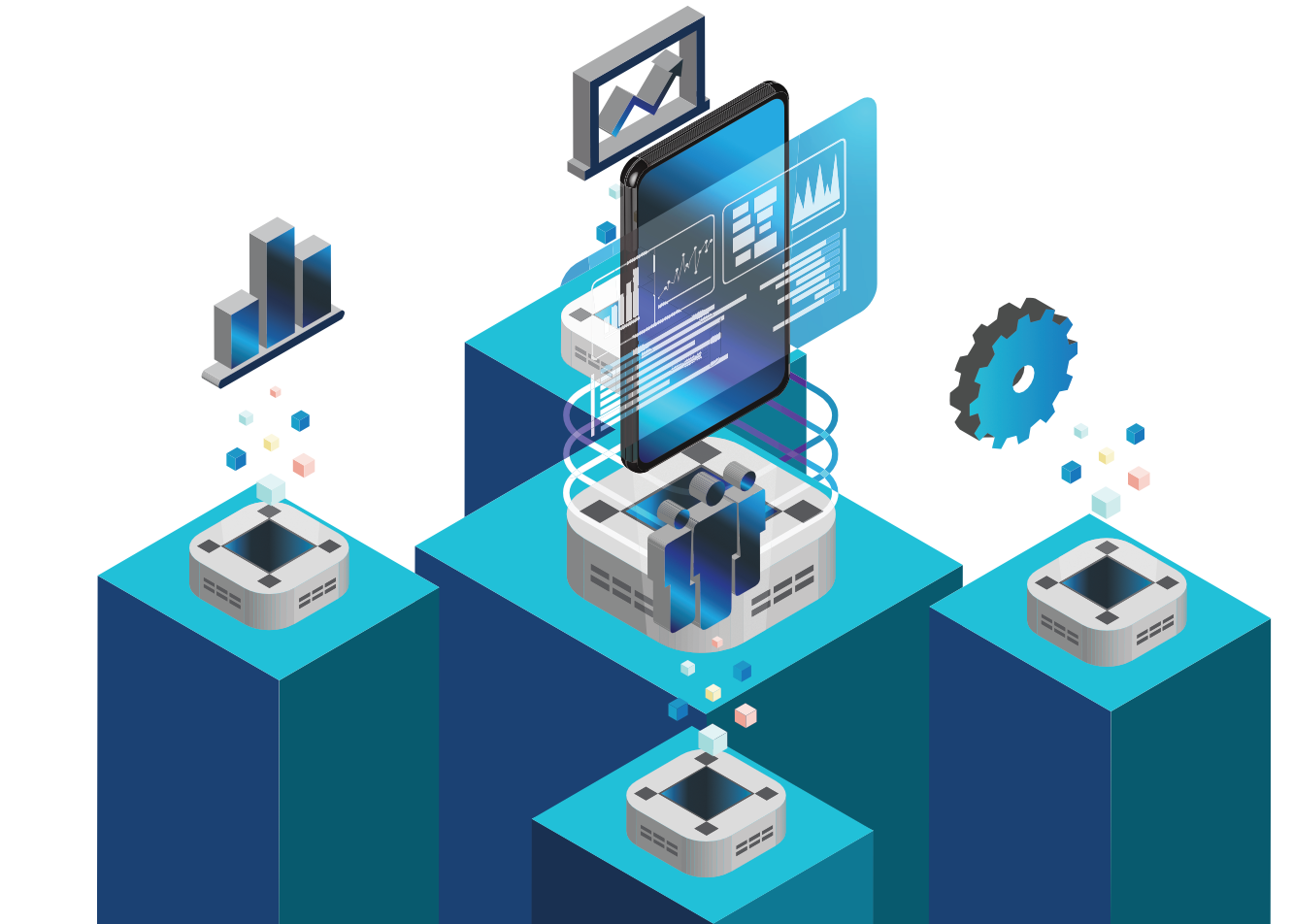Microservice Development
Smaller, loosely coupled services, easier scalability, reduced risk of failure, simple maintenance.

Eight benefits of microservices that will help your applications more adaptable, allowing them to be easily scaled.
Improve agility by allowing different teams to work on different components of an application independently. This allows teams to focus on their own specific domain, enabling them to move quickly and make changes without having to coordinate with other teams or worry about the impact of their changes. Microservices are more reliable than monolithic architectures as they can be deployed, managed, and scaled independently, allowing for more rapid development and deployment cycles.
Improved agility
Flexible scalability
Scale and deploy services independently, reducing the need for large-scale system deployment. This enables more efficient use of resources and makes it easier to deploy or upgrade new services, accurately cost a service, and maintain availability if a service experiences a surge in demand.
Microservices enable the deployment and scaling of individual components independently, making implementations faster, more reliable, and easier to test. Furthermore, they are designed to be modular and highly decoupled, making debugging and maintenance easier. This allows for rapid change deployment and rollback with minimal disruption.
Improved system integrity
Service independence increases the failure resilience of an application. This means that even if one component fails, the rest of the system can continue to function. Also, individual components can be modified, reworked or scaled without affecting the rest of the system, contributing to the overall system integrity.
Microservices can be deployed in multiple locations, enabling distributed development and deployment. This leads to better code organization and easier maintenance for increased scalability, availability, and performance.
Application decentralization
Data isolation
To avoid unintentional entanglement between services and to maintain the effectiveness of separate deployments, microservices should each have their own private data store. Each service may have its own data models, queries, or read/write patterns, which is critical, particularly if the organization is required to comply with the General Data Protection Regulation (GDPR)
Microservices are an architectural and organizational approach to software development that divides large, complex applications into smaller, loosely coupled services. Large applications, as you might expect, are difficult to develop, deploy, and maintain; however, small independent services can be easily scaled up and down, reducing the possibility of system failure and allowing applications to be easily maintained.

Future trends in customized applications are driven by increased automation of corporate operations and an increasing amount of enterprise data in retail, manufacturing, and healthcare.
Artificial intelligence for IT operations
AIOps is all about using machine learning and AI technologies to create tools that can do the work of IT operations teams. This includes solving complex system failures, spotting security breaches, and recognizing changes in data and patterns. With the help of cloud-based distributed containerization, the data that IT Ops teams need to monitor is easily accessible. AIOps can help with failure prevention and troubleshooting, and also shut down unused resources to save money and automate security monitoring.
Serverless architecture
Serverless microservices ease the integration of serverless functions with other managed services. The same logic and components used in one microservice can serve as the basis for other microservices using this approach. As the application grows, this feature reduces the amount of code that needs to be written.
Serverless microservices are an excellent choice for complex and constantly changing applications, as they are easy to manage and scale, and also for those that can be split into multiple services and event-driven tasks.
Multi-cloud environment
The future of microservices promises to be easier for developers and operations teams. Excitingly, this will be facilitated by the use of microservices across various cloud environments, to capitalize on their distinct characteristics. For example, a single cloud environment would be best for database and information management microservices. Other microservices might need storage, archiving, AI, and analytics features from two or three different cloud environments.


